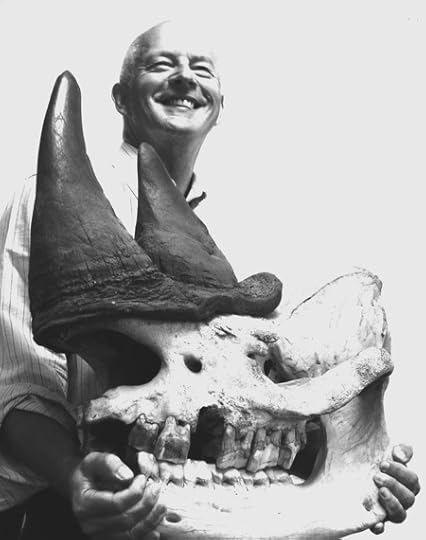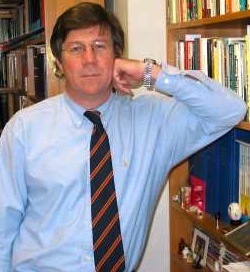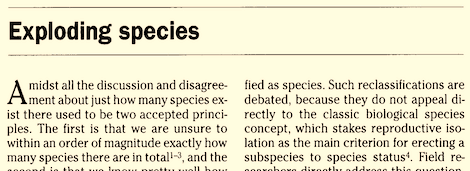Marc Abrahams's Blog, page 570
June 4, 2012
The cottage loaf sign, medically speaking

Panel A ‘Cottage loaf’, ‘snowman’ or ‘figure of 8’ heart shape due to total anomalous pulmonary venous drainage, image reproduced with kind permission of the Images in Pediatric Cardiology journal. Panel B Outline of cottage loaf. Panel C Cottage loaf (a rustic traditional English loaf of bread made with yeast and white flour) consisting of two parts, the upper part is smaller than the lower part, image from Wikimedia Commons the free media repository.
Certain medical images evoke memories of a cottage loaf (a traditional English loaf of bread – pictured here):
The cottage loaf sign can be found in right-sided diaphragmatic rupture where the herniated liver is constricted by the diaphragm at the rupture site. A smaller portion of the liver is separated from the larger portion of the liver by the diaphragmatic constriction giving a radiologic look akin to a cottage loaf (here is a picture). [Hussain M, Al Damegh S. Food Signs in Radiology. Int J Health Sci (Qassim), 2007 1(1):143–154.]
Additionally – on ultrasound scan - the cottage loaf appearance has been described with choroidal melanoma (an eye tumor); when this tumor breaks through Bruch’s membrane a bilobed mass not unlike a cottage loaf results (here is a picture). [Aironi VD, Gandage SG. Pictorial essay: B-scan ultrasonography in ocular abnormalities. Indian J Radiol Imaging, 2009 19(2): 109–115.]
BONUS: Here is a fuller account of what the image pictured here depicts.

June 3, 2012
Tomorrow—June 5—is Dead Duck Day
Tomorrow, June 5th, is Dead Duck Day. Exactly at 17.55h, we will gather next to the Natural History Museum in Rotterdam, the Netherlands. Click here for more information (and here for those who master the Dutch Language) about this commemoration of the incident that became the first scientifically recorded case of homosexual necrophilia in the mallard duck.
Tim Birkhead (picured below, not with a dead duck), perhaps the world’s greatest scholar of post-copulatory sexual selection in birds, had sent this years special Dead-Duck-Day-Message. The message will be read aloud to the assembled dead-duck enthusiasts.

Shooting/Shocking Peas re Panspermia
There are ‘pea shooters’ and there are ‘PEA SHOOTERS’.
 A research team from The Dynamic Response Group of Cranfield University, UK (motto: ‘Out of darkness, light’), have employed one of their helium gas-guns to create what could well be the most powerful pea-shooter ever assembled. The device was able to shoot a projectile towards a cluster of fresh garden peas at around half a kilometre per second. Manganin gauges measured the impact – registering tremendous pressures of up to 0.3 Giga Pascals (more than 3000 times atmospheric pressure).
A research team from The Dynamic Response Group of Cranfield University, UK (motto: ‘Out of darkness, light’), have employed one of their helium gas-guns to create what could well be the most powerful pea-shooter ever assembled. The device was able to shoot a projectile towards a cluster of fresh garden peas at around half a kilometre per second. Manganin gauges measured the impact – registering tremendous pressures of up to 0.3 Giga Pascals (more than 3000 times atmospheric pressure).
See: On the shock response of Pisum Sativum (a.k.a the Common Pea) (from the 17th Biennial International Conference of the APS Topical Group on Shock Compression of Condensed Matter, Volume 56, Number 6. SHOCK11 Meeting of The American Physical Society.)
The authors note that the results of the experiments may have implications for those who are interested the theory of Panspermia – as lead researcher Mr. James A Leighs explains on his webpage :
“These experiments are providing an insight in to whether or not living organic samples could survive some of the extreme conditions experienced during asteroid impact. Initial work is looking at plant seeds as models for the interplanetary transport of life.”
Notes:
• All attempts to germinate the shocked peas were unsuccessful.
• The research may have an impact on the latest theories about Panspermia.
• The most recent experiments , with smaller seeds Lepidium sativum (cress) find that they can survive up to 0.8 Giga Pascals.
“These results suggest it is unlikely that the plant seeds tested would be able to survive the extreme conditions on an asteroid during impact, but may be able to survive shock waves that would be generated from such collisions when existing on a planetary body.”

June 2, 2012
Imprecise engineering: launching boats,
A small compendium of videos of engineering moments — boat launches — that were slightly miscalculated:

June 1, 2012
Exploding meat
The June 1998 issue of Agricultural Research magazine included this report about exploding meat:
In 1992, Morse Solomon, a meat scientist, joined forces with engineer John Long to test Long’s invention, an innovative process called Hydrodyne, which uses shock waves in water to tenderize meat.
Solomon is with USDA’s Agricultural Research Service, and Long is retired from the Lawrence Livermore National Laboratory in San Francisco, California….
They needed someone willing to take risks. And this person had to believe in Hydrodyne’s potential.
In Virginia, they found Eric Staton, who was with a company called Air Power, Inc. He was licensed and trained to use explosives, the agent that would create the shock waves in the process.
Staton helped Solomon and Long safely test the Hydrodyne concept using very small quantities of explosives and individual cuts of meat, such as steaks and small roasts….
A Peacetime Use for Explosives
Throughout John Long’s career as a mechanical engineer, he worked with explosives at Lawrence Livermore. His mission: preparing the Nation’s defense. He always wondered if the explosives he studied could be used for peaceful ends–like tenderizing meat. Then, after more than 10 years of retirement and long after the Cold War’s end, he began pursuing the Hydrodyne concept in earnest.

May 31, 2012
Exploding Species: a disappointment
The content of the monograph called “Exploding Species” is undoubtedly exciting to most accountants an biologists. But readers of a certain temperament, who seek high levels of stimulation, may feel a bit deflated upon learning that it’s merely about counting the number of species. The study is:
“Exploding Species,” Trevor Price [pictured here], Trends in Ecology & Evolution, Volume 11, Issue 8, August 1996, Pages 314-315. The author, then at the University of California at San Diego, explains:
“The reclassification of subspecies and populations as sibling species may turn out to be much more widespread. In North America, Groth has used songs and call notes to split a single species of crossbill into eight’s, although these classifications are more controversial. There may well be large numbers of morphologically similar sibling species in that most speciose group of all, the Arthropods, in which case our estimates of species numbers could be wildly inaccurate. It is a truism that the temperate regions are much better known than the tropics, and that birds are much better known than other groups. If the genus Phylloscopus is a yardstick, it is clear that there is a long way to go to determine the number of species in the world, and it is likely that revised estimates will continue upwards, at least until the extinction spasm becomes well established.”

Engineering: Improving pot by obliterating its essence
The influence, or at least of the spirit, of Rube Goldberg is evident in a tangential way, in this news report by AFP:
Scientists invent ‘cannabis without the high’
Israeli scientists have cultivated a cannabis plant that doesn’t get people stoned in a development that may help those smoking marijuana for medical purposes, a newspaper said on Wednesday. According to the Maariv daily, the new cannabis looks, smells and even tastes the same, but does not induce any of the feelings normally associated with smoking marijuana that are brought on by the substance THC, or tetrahydrocannabinol….
Despite the innovation, it is unlikely to have any impact on Israeli law, which outlaws the use of marijuana as illegal except for medical purposes.
(Thanks to investigator Peter Epstein for bringing this to our attention.)
BONUS: The 1999 Ig Nobel Prize in biology was awarded to Dr. Paul Bosland, director of The Chile Pepper Institute, New Mexico State University, Las Cruces, New Mexico, for breeding a spiceless jalapeno chile pepper.

May 30, 2012
The Chemistry Of Exploding Ants: Oh, Oh
A natural exclamation, to a person upon first encountering the theme of the study “The Chemistry Of Exploding Ants”, might be “Oh-Oh!” That is in fact part of the chemical story, as illustrated in the figure below, which is reproduced from the study.
“The Chemistry Of Exploding Ants, Camponotus SPP. (cylindricus COMPLEX),” T.H. JONES, D.A. CLARK, A.A. EDWARDS, D.W. DAVIDSON, T.F. SPANDE and R.R. SNELLING, Journal of Chemical Ecology, Vol. 30, No. 8, August 2004. The authors explain:
“A detailed comparative analysis of the exocrine chemistry of nine Bruneian Camponotus species in the cylindricus complex is reported. Workers of these species are known to have hypertrophied mandibular glands and release their glandular contents suicidally from the head by rupturing the intersegmental membrane of the gaster.”

May 29, 2012
Attenborough Can Make Anything More Dramatic
Sir David Attenborough’s sonorous tones add a measure of gravitas to any nature documentary. In this video from BBC One’s Graham Norton Show, Sir Attenborough lends the power of his voice to narrate a video of a retifistic tortoise’s unsuccessful advances toward a shoe.
(HT to Jerry Coyne for sharing this via his blog)
Bonus: Recall the winner of the 2011 Ig Nobel Prize in Biology for studying Australian beetles’ attempts at mating with beer bottles.
Bonus: Also recall the 2011 Ig winner for Physiology, on contagious yawning in tortoises—or, more accurately, the apparent lack thereof.

May 28, 2012
Buttock and breast ogling: Britain vs. Argentina
 Sex clearly drives Britain and Argentina as they vie to dominate islands of interest. The two great nations are rivals in producing academic studies of whether and how people stare at women’s breasts or buttocks.
Sex clearly drives Britain and Argentina as they vie to dominate islands of interest. The two great nations are rivals in producing academic studies of whether and how people stare at women’s breasts or buttocks.
Britain fired the first shot in this war. In 2007, Adrian Furnham [pictured here] and Viren Swami of University College London published a report called Perception of Female Buttocks and Breast Size in Profile, in the journal Social Behaviour and Personality.
Professor Furnham is, by his own reckoning, one of the most productive academics alive, publishing many hundreds of papers in dozens of far-flung fields.
Professor Swami, now at the University of Westminster, also beavers relentlessly, both in Britain and abroad….
So begins this week’s Improbable Research column in The Guardian.

Marc Abrahams's Blog
- Marc Abrahams's profile
- 14 followers

























